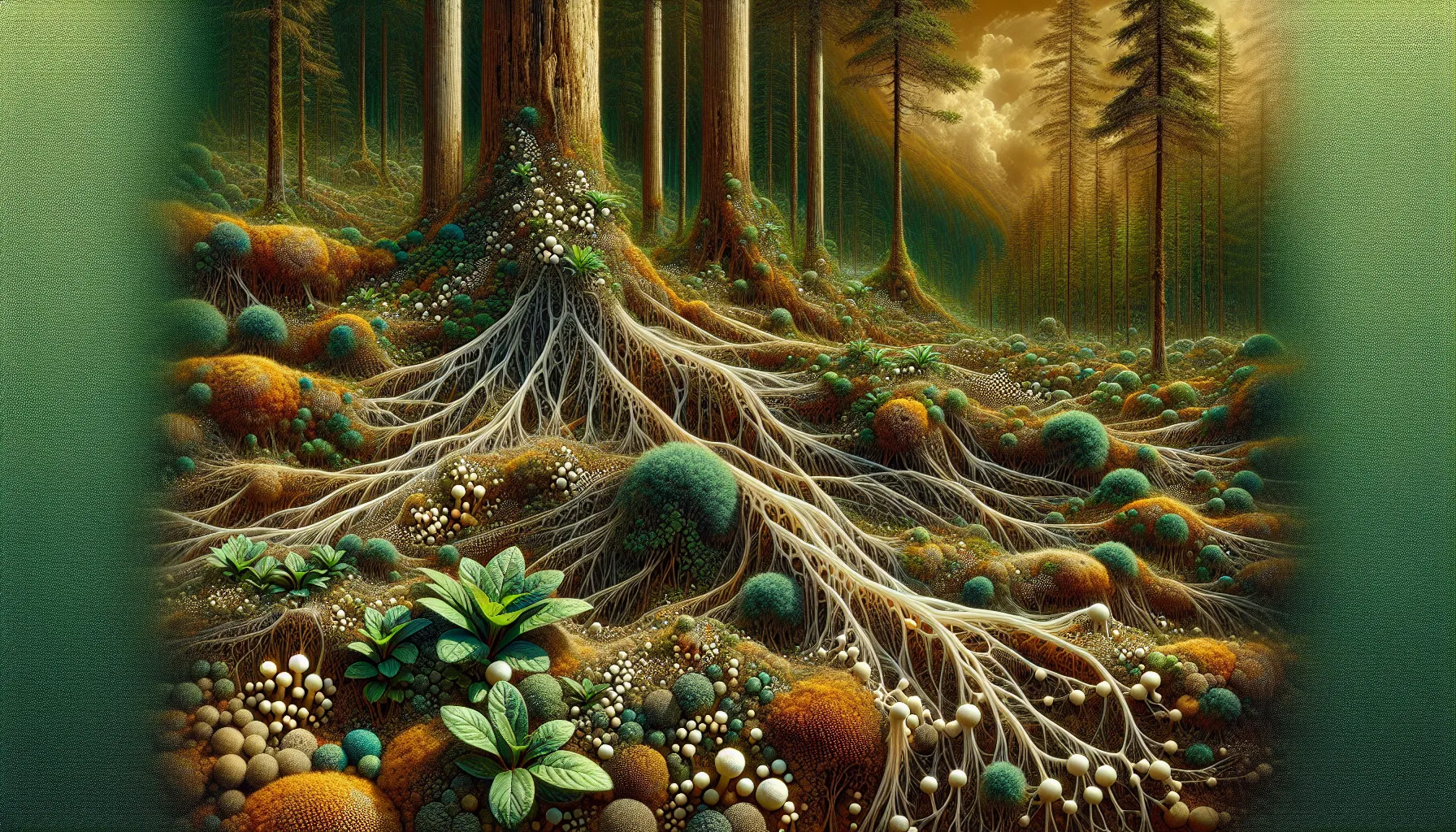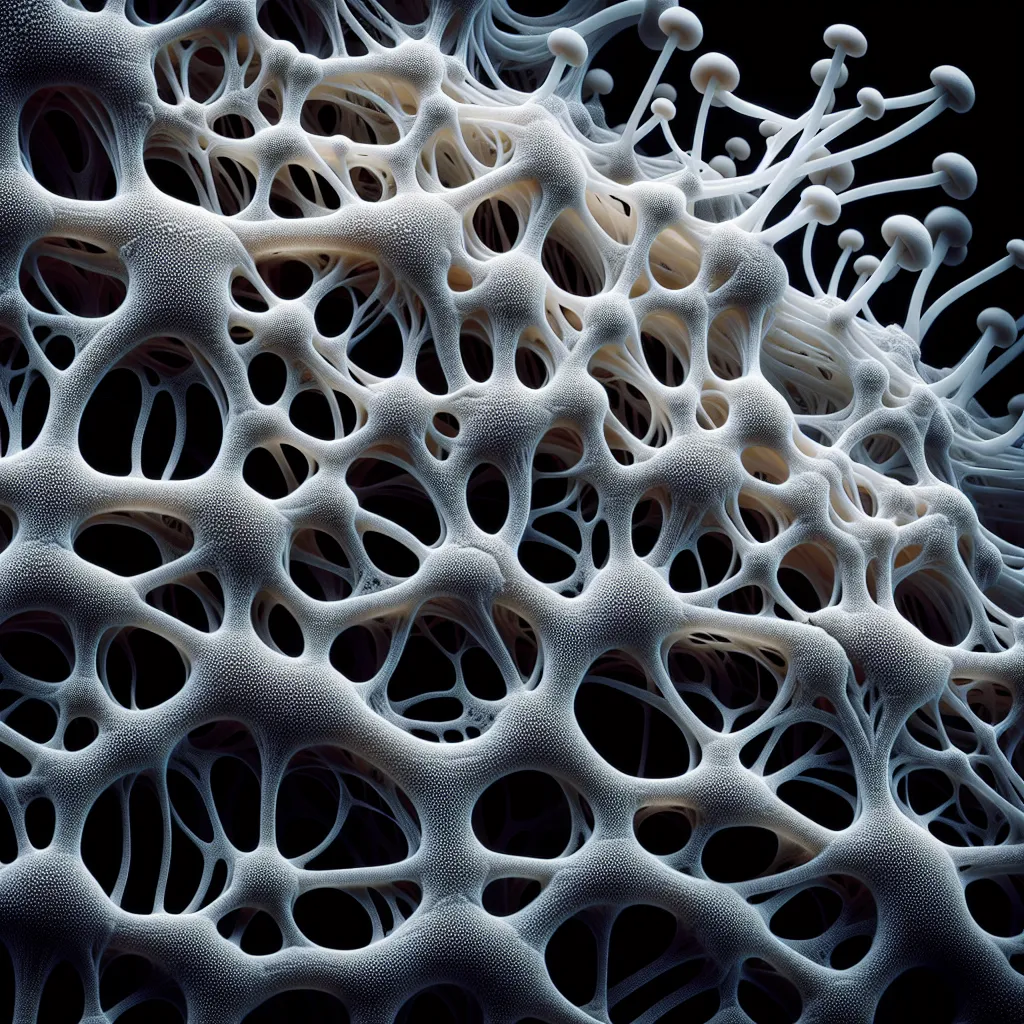Beneath the soil that nurtures trees, plants, and flowers lies an intricate and often unseen kingdom. This underground network, known as mycelium, is a critical component of our ecosystem, performing a variety of vital functions that support life on Earth. Mycelium is the vegetative part of a fungus, consisting of a mass of branching, thread-like hyphae, that has fascinated scientists and nature enthusiasts alike. In this article, we delve into the wonders of mycelium and its profound impact on our world.
The Mycelial Web: Earth’s Natural Internet
Mycelium has been likened to the internet of the soil. This is because it forms a vast and interconnected network that facilitates communication and nutrient exchange between different plants. It’s astonishing to consider how these fungal networks can extend for miles, connecting disparate plants in a symbiotic relationship. This mutualistic association, known as mycorrhiza, is a crucial element in the health of our forests and gardens.

Plants invest in this relationship by providing carbohydrates to the fungi, which in return offer minerals and water from the soil that the plants would have difficulty accessing on their own. This exchange isn’t just limited to nutrients; mycelium also transports chemical signals that can help plants bolster their defenses against pests and diseases. To explore this fascinating subject further, the Mycorrhizal Applications site provides a wealth of information on mycorrhizal relationships and their implications for agriculture and forestry.
Mycelium as an Environmental Steward
Mycelium plays a pivotal role in the decomposition of organic matter, which is essential for soil health and carbon cycling. By breaking down dead plant material, mycelium releases carbon, nitrogen, and other nutrients back into the soil, making them available for new plant growth. This process not only sustains the soil’s fertility but also helps mitigate climate change by sequestering carbon.
The fungal kingdom’s ability to decompose and recycle is so effective that some researchers are exploring the use of mycelium to clean up environmental contaminants—a process known as mycoremediation. Organizations like the Fungi Foundation delve into the potential of fungi to restore ecosystems and offer resources on how mycology can contribute to environmental conservation.
Mycelium in Medicine and Industry
Beyond its ecological roles, mycelium has promising applications in medicine and various industries. The medicinal properties of certain mushrooms have been recognized for centuries, but it’s the mycelium that often houses the compounds responsible for these health benefits. Research into mycelium-based pharmaceuticals is uncovering potential treatments for a range of ailments, from antibiotics to cancer therapies.
Industrially, mycelium is gaining attention as a sustainable material for product development. Mycelium-based materials can grow quickly and are biodegradable, making them an excellent alternative to plastics and other pollutants. For a closer look at the innovative use of mycelium in manufacturing, the Ecovative Design website showcases how mycelium can be harnessed to create eco-friendly products.

Mycelium in Agriculture: The Growth Partner
In agriculture, mycelium is being recognized for its ability to improve crop yields and soil health. By forming mycorrhizal associations with crops, mycelium can enhance a plant’s nutrient uptake and stress tolerance. This natural partnership reduces the need for chemical fertilizers and pesticides, leading to more sustainable farming practices.
For an in-depth understanding of how mycelium can revolutionize modern agriculture, one might visit the Rodale Institute‘s website, which conducts research on organic farming and the integration of mycorrhizal fungi for crop improvement.
Mycelium and the Future of Food
Mycelium is not just a partner to plants; it is also a potential source of sustainable food. With the growing interest in plant-based diets and alternative proteins, mycelium-based meat substitutes are emerging as a nutritious and eco-friendly option. These products aim to replicate the texture and flavor of meat while reducing the environmental footprint associated with animal agriculture.
The exploration of mycelium in the food industry is still in its infancy, but for those curious about its culinary potential, resources like the Mycelium Food Future outline the prospects and developments in this exciting new field.
Conclusion
Mycelium, the hidden kingdom beneath our feet, is a remarkable and versatile component of our planet’s ecosystems. Its ability to connect plants, recycle nutrients, and even clean up the environment exemplifies the interconnectivity of life on Earth. The applications of mycelium in medicine, industry, agriculture, and food are just beginning to be realized, and they hold the promise of a more sustainable and healthier future.
As we continue to uncover the intricacies of mycelial networks and harness their potential, it’s essential to approach this with a sense of stewardship and respect. The wonders of mycelium remind us that often, the most extraordinary things are not immediately visible but lie just beneath the surface, waiting to be discovered and appreciated.
